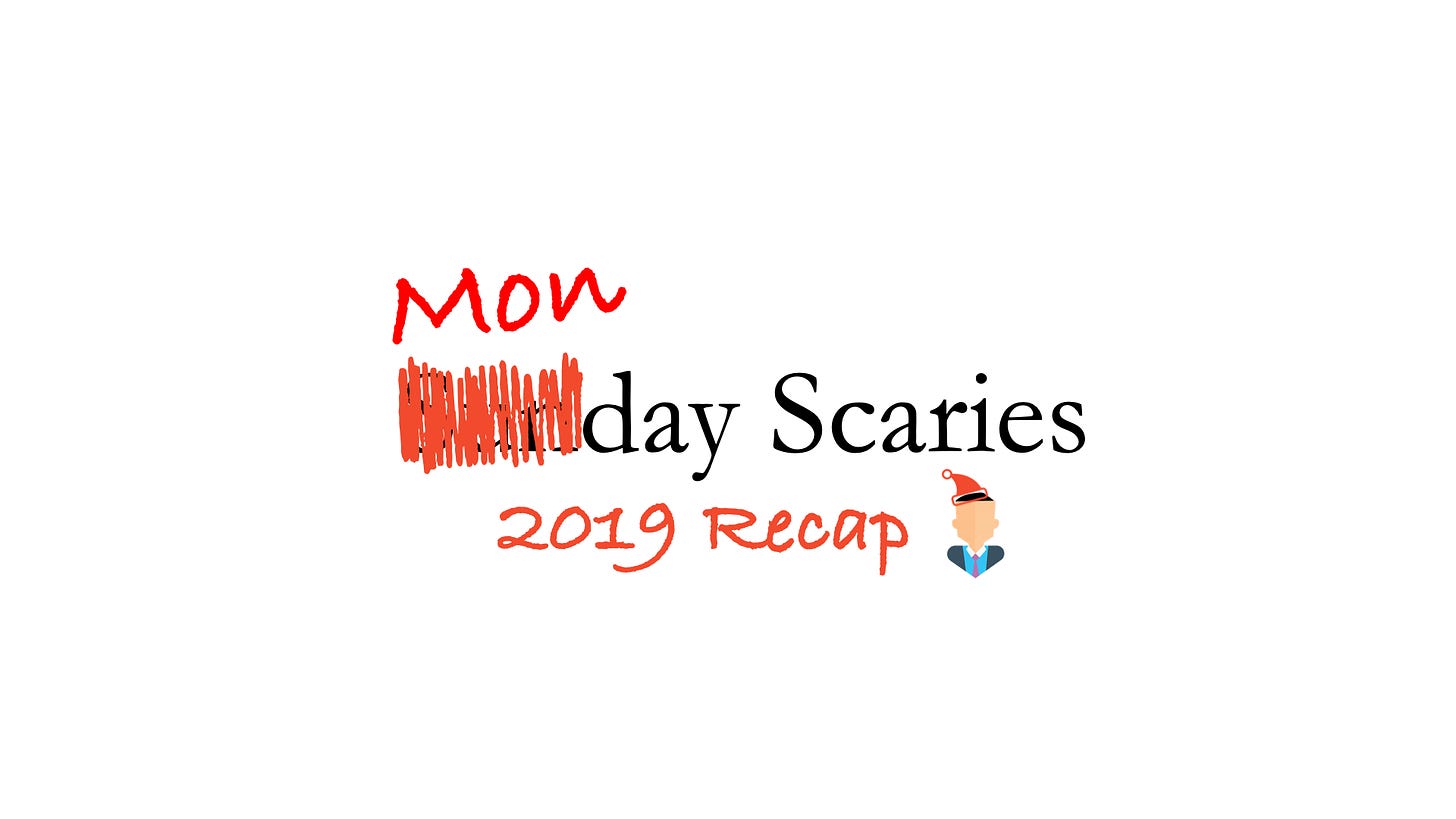Sunday Scaries: 2019 Recap
Sunday Scaries started in April as an outlet for my thoughts on contemporary issues at the intersection of society, technology, and science. Since then, Sunday Scaries has published over 40,000 words, some of them better than others.
Subscribers of this newsletter will know that this publication covers a range of topics. It is a reflection of my own thinking, and I’m grateful for the opportunity to share that thinking with you all each and every week. It really is a miracle to have the opportunity to independently publish on topics that I find interesting.

With that, I thought I’d share my personal highlights. Below you will find a compilation of my all time favorites from this year:
🗺 The Silent Cartographer: How maps shape our worldview
Big idea: The reality is that all of our conflicts, our religions, our hopes and dreams — they exist on a small fraction of the Earth’s surface. 70% of the Earth is ocean, yet our maps are entirely focused on accurately portraying invisible political zones and boundaries. This assumption has trickled down into our politics, economics, and businesses. I believe that there is unexplored potential in these unclaimed areas, available for the taking to anyone bold enough to try.

👣 Progress Is (In)Evitable: Similarities between great projects and what it means for synthetic biology
Big idea: One of the biggest mistakes people make is assuming that technological progress is inevitable. In reality, technological progress is unevenly distributed, and often comes in spurts. Looking back, there is commonly a “golden age” for fields; a time when an incredible amount of progress was made in a short period of time.

⛰Climbing The Right Hill: A framework for making decisions when things are foggy.
Big idea: Individually, we’ve all experienced mimetic desire through office politics or comparisons with others. Careers that rely on prestige like technology, finance, and consulting are especially susceptible. Grouping ambitious 20-somethings into a cohort and ranking them against each other will inevitably lead to scapegoat behavior. If the only way to go is “up or out” then people will naturally begin to eye each other warily, rather than embracing collaboration.
🍰 Food For Thought: Social media, junk food, and some strategies for digital dieting.
Big idea: Social media looks like real media in much the same way that junk food looks like real food. You can consume it and you will get full, but there is no intellectual value. […] Real moments with friends create experiences that shape our outlook on life. When we reflect on our beliefs, we point to certain moments that influence our behavior. Social media influences us, but without the value of experience. Like empty calories, these influences fill us to the brim and don’t leave room for independent thought.
🌍 Changing The Behavioral Climate: My submission to the Economist's essay competition on climate change.
Big idea: Historically, civilization has relied on governments to provide the planning, development, and maintenance of public goods. Bridges, roads, and utilities are built and operated without expectation of profit. If a bridge collapses, it is the responsibility of the government to provide a solution. However, no market or government mechanism has both the incentive and means to provide a solution for climate change. Therefore, there is a need for an external, sovereign body with the political and economic authority to oversee and enforce climate change related policy.
⚡️Digitizing Supply and Demand: The opportunity for new marketplaces and why Airbnb's asset-light model is ready for new industries.
Big idea: For rational consumers, a purchase falling high on the Cost axis must also be sufficiently far to the right. This is known as “getting your money’s worth.” […] Services like Airbnb and Uber allow suppliers to take advantage of untapped utilization to make money from their assets. They flip the axis so that available utilization becomes a measure of supply — a positive trait. As we continue to explore these types of business models, the next logical step is to move down the “Cost” stack. New opportunities appear when we remove the constraint of a minimum transaction value. Moving downstream means a smaller market, but at this scale even an organization 1/10 the size can command the coveted unicorn valuation.

🗣 Alexa, What Did I Say Last Week?: Privacy considerations for a connected future.
Big idea: If you have installed a smart speaker in your home, you need to carefully consider the tradeoffs you are making for the sake of convenience. […] The goal of [technology] companies is not to simply sell devices, but instead to shape our daily interactions with technology. As they seek to evolve these products into truly seamless voice assistants, they will not be constrained to simply listening after keywords, but will use any information available to get the job done

📊 Productivity, Not PowerPoint: A perspective on why presentations fail to drive discussion in the workplace.
Big idea: Employees know that “work” is done in Excel, and then emailed and reviewed and sent again along the chain. This is a fantastic way to stay very busy but accomplish little to address the underlying business needs. […] Consider long form writing as an alternative to PowerPoint. Next time you have a meeting where the outcome is discussion, take a week or more to clearly articulate your position in writing. You’ll be surprised with how much more clear your understanding of the problem will become.
📹 Facial Recognition As A Service : Examples and commentary on the proliferation of facial recognition in public settings.
Big idea: As the pace of improvement in these humanesque systems increases, our definition of reasonable will be stretched. Furthermore, these systems increasingly cross international boundaries where no one particularly cares what the U.S. Constitution has to say about the matter. […] All of the examples above are actions that we can imagine happening today, but require an impractical amount of human coordination to accomplish. It’s convenient to think of today’s machine learning systems as an army of 5-year olds. Limited capabilities enabled at previously impossible scale.
In closing: Thank you for being a subscriber and growing with me on this journey. Without all of you, I wouldn’t have the motivation to write these, so thanks for making this publication possible. Merry Christmas, Happy New Year, and see you all in 2020.



